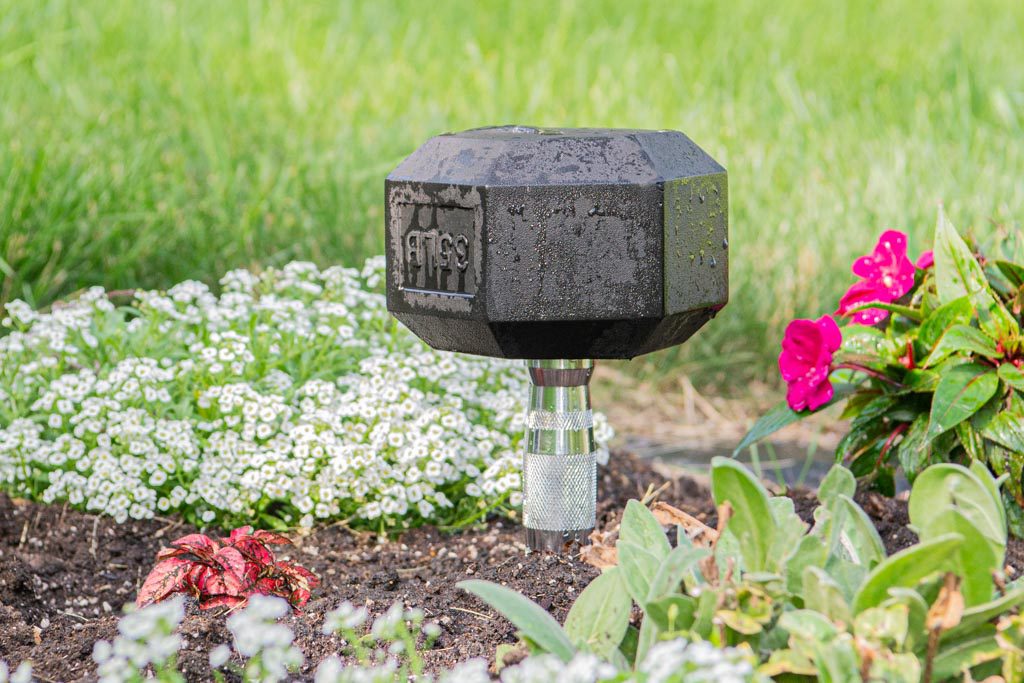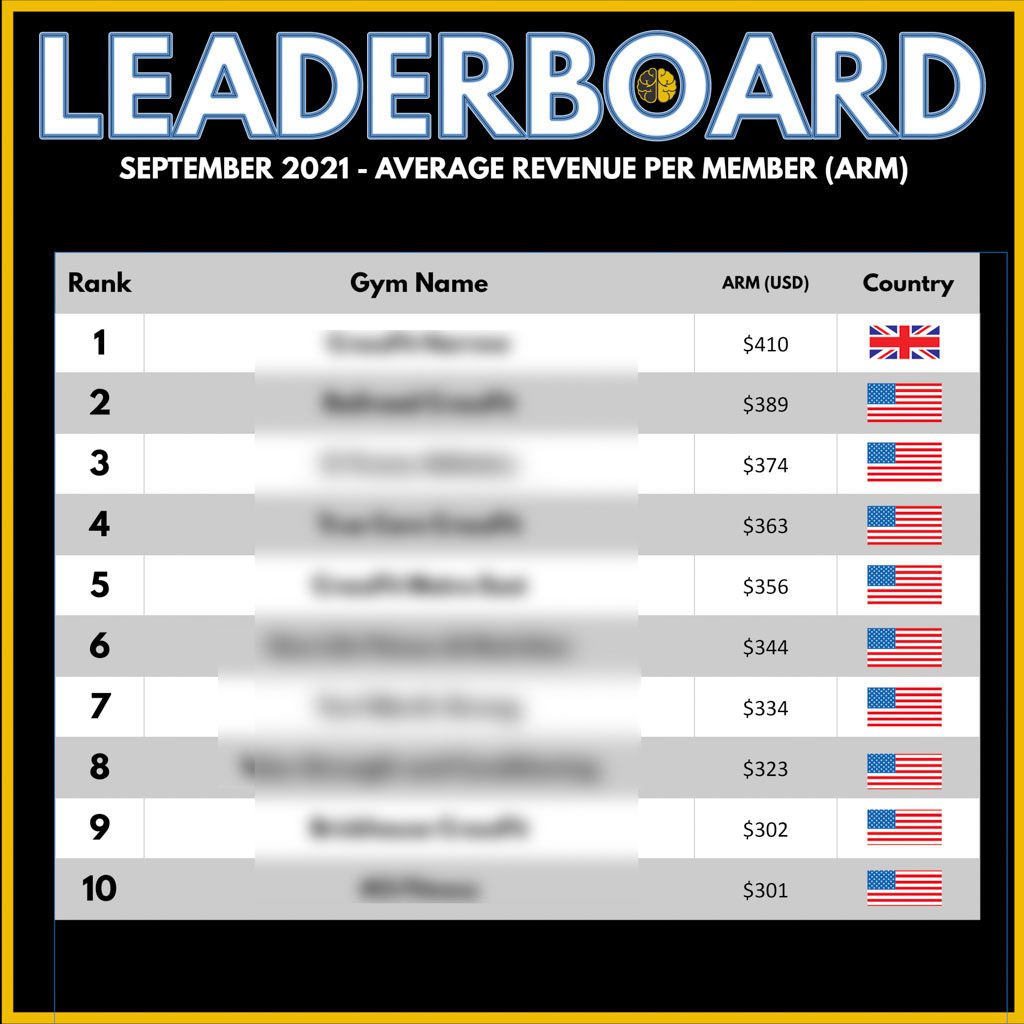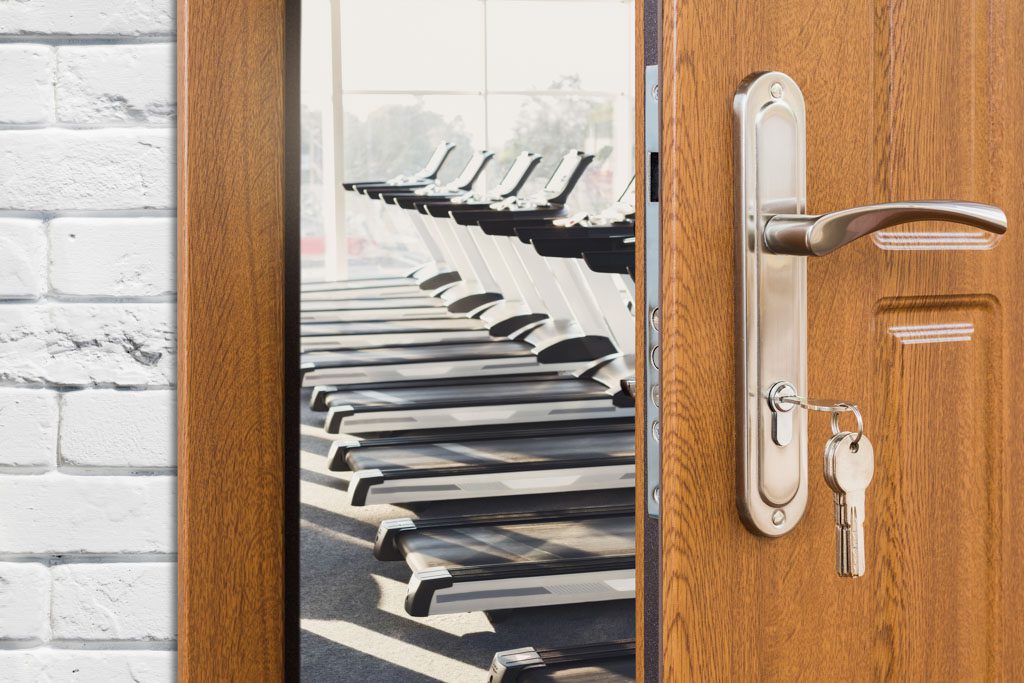If you need exceptional insight and advice on how to start a gym, you’ve come to the right place.
To help you get your gym up and running, we’ll go over all this and more:
- Your vision for your business.
- Start-up options.
- Financing and budgeting.
- Profitability.
- Target markets.
- Revenue generation and pricing.
- Free resources and mentorship.
The good news: Now is an excellent time to start a gym. Unlike the previous decades, a wealth of fitness business resources are now available to you, including mentorship, free instructional guides, books and courses, data-filled reports, and articles like this one. Instead of “figuring gym ownership out on your own,” you can now avoid a host of mistakes and reach profitability fast.
Being your own boss and enjoying the benefits of gym ownership are obtainable goals if you combine your desire to help people with education and business acumen. Read on to find out how to start your gym the right way.
Your Motives and Your Goals
If you plan to start a gym, you must first have a clear picture of your end game, and you must determine what success means to you. Is it financial reward, improved health of clients, care provided to an underserved market or something else? What is your vision for your business?
Your goal should be precise enough that it can be stated in one to three sentences. In gym ownership, your goal must be worthy of the time, money and energy you will have to put in to make your business a success. Don’t be fooled: It’s going to take hard work, and you’re going to have to be a business owner, not just a great coach.
Whether it’s part of your vision statement or not, the word “profitability” should be at the top of your mind because no dreams come true without profit. Unprofitable businesses fail their clients and their staff members, to say nothing of the strain they place on owners and their loved ones. Even though you want to help people become fit and healthy in your gym or studio, every step you take should move you toward profitability in the early stages. Then focus on sustainability and growth once you manage to turn a profit.
Gym ownership gives you a great business opportunity to enrich your clients’ and employees’ lives and define success on your own terms. So set your vision and then follow it while employing the business practices that will allow your gym to last for decades.
Let’s get started by determining what startup options work best for you.

The Two Main Options: Buy an Existing Gym or Start from Scratch
You might be the kind of entrepreneur who prefers to start from scratch so you can implement your extraordinary ideas and strategies with a blank canvas. On the other hand, you might choose to take over an existing gym and shape it into a stronger, more profitable business.
The cost of opening a gym is highly variable. Large gyms with lots of machines and equipment can be very expensive. For example, a single piece of commercial equipment can cost $4,000 or more.
Smaller gyms that sell coaching can be opened for about $20,000-$40,000. That range includes the cost of Two-Brain mentorship (an investment in avoiding costly mistakes), modest space upgrades and essential equipment. This amount can serve as a baseline for comparing the two options.
A Few Essential Considerations
You can start evaluating your options by asking yourself the following questions:
Starting a gym from scratch:
- Are you willing to live with your rookie mistakes?
- Can you survive until your gym is profitable, and do you have a plan to get to profitability fast?
- Do you know or are you willing to learn how to market and recruit a Founders Club so you can start with members on Day 1?
- Are you good at selecting and training talented coaches and support staff?
- Can you build the systems your gym needs to consistently operate at a high level?
- Do you have a clear plan of what you will offer at your new gym?
Buying an existing gym:
- Are you ready to commit effort to fixing the big problems with the gym, including adjusting rates, changing policies, hiring or firing staff and so on?
- Can you negotiate a favorable purchase with owners who are emotionally attached to their gym?
- Do you have a plan to get rid of profit-stealing specials and discounts and replace members who depart when rates change?
- Are you certain the gym’s physical space and brand are absolutely perfect?
- Do you see a clear path to making the gym better than it was?
- Have you balanced the total cost of acquisition (including the time and money it will require to make necessary changes) against the costs of starting fresh?
When you have answers to these questions, you will have a better understanding what of which path is right for you.

Starting by Buying an Existing Gym
The harsh reality is most gym owners work incredibly long hours without breaking even. So chances are the owners of the gym you’re interested in toiled long and hard to get their gym to profitability. Or perhaps their business isn’t profitable and they’re looking to get out. In the first case, you’ll have to pay more for a stable, profitable gym. In the second case, you might get a better price, but you’ll have more work to do.
Before exploring more details, look at the pros and cons of buying an existing gym.
| Pros of Buying an Existing Gym | Cons of Buying an Existing Gym |
| No startup legwork | Could have hidden problems |
| Established client base | Fixing might be more work in the long run |
| Head start on income | Members might resist changes and leave |
| Permits and licenses are likely already in place | Staff could resist change and take clients on exit |
| Existing audience for marketing | Extensive renovations might be needed |
| Proven record of profit or clear potential for profit | Acquisition costs or costs of driving business to profitability |
| Brand awareness in the market | Current owners might overvalue their business |
As terrific as the pros are, the cons of buying an existing gym are significant. And some of the them could mean doomsday for your business. However, you can reduce the influence of the cons by shrewd action during the evaluation and negotiation process.
Steps You Should Take During the Buying Process
The operational end of owning a gym is all about people: clients and staff. But the business end is all about numbers.
The pre-negotiation stage is a crucial time to determine whether the prospective gym can be profitable for you. You want to find out:
- What is the profitability record of the business?
- What revenues are most likely to be sustainable over the long run?
- What percentage of clients are willing to stay under new ownership?
- What are the outstanding debts, agreements and commitments?
- What are the assets, advantages and perks?
- If the gym is unprofitable, what are the causes?
Also, this analytical period could reveal the real reasons why the owners are selling.
At this point, you can start to dial in your starting offer. Here are the essential pre-negotiation steps you should take.

1. Perform a Valuation of the Gym
Numbers don’t lie. So before going forward, make sure you do a thorough valuation. You can accomplish this by getting these four variables for the past three years.
- Average number of members.
- Average monthly revenue per member (ARM).
- Total operating expenses.
- Tax expense.
Once you have these figures, you can use this valuation tool to determine the estimated value of the gym.
Or suppose you are in a situation where you need a rough estimation. Here’s how to do it: You can multiply last year’s profit by three before multiplying that sum by the retention rate. Then you add the depreciated value of the equipment, not the original purchase price. Its depreciated value is likely 30 percent of the original purchase price or around 10 percent if it’s more than three years old.
For example, suppose Lori’s gym makes a total profit of $70,000 annually with a retention rate of 75 percent and older equipment worth $10,000. The rough estimate of her gym’s value would look like this.
| Total profit | $70,000 |
| x 3 years | $210,000 |
| x .75 (75%) retention rate | $157,500 |
| + $10,000 for equipment | $167,500 |
This simple tool can help you determine the actual value of the gym. However, it only works with the numbers the owner gives you. If you cannot get them or don’t trust them, it is best to scrap the idea of buying the gym.
2. Talk to the Coaches
Before you seal the deal, you should take the time and talk with each coach. The main question you should ask is, “What’s your Perfect Day?” Then, you can show them the Two-Brain Career Growth ToolKit and explain your strategy for creating an opportunity-rich environment that they can use to reach their goals.
This chat is an excellent time to find out their intentions concerning the transition. Because coaches are the nucleus of your gym, their buy-in is critical to improving operations and increasing profit. You don’t want to create a transition that spooks some of them into leaving. This possibility could leave you understaffed during a very critical period, especially if they take clients with them.

3. Talk to the Seed Clients
It would help if you talked to the gym’s best clients—“seed clients”—when the sale is apparent. Before you finalize the deal, request the client list. Pick out the ones who are the biggest spenders and bring the most joy to the owner. Choose a good spot and invite them for coffee.
As with any new person you meet, get to know them by asking about their life, work and family. Share a little about yourself. But most importantly, find out what attracted them to the gym. Also, ask them for their likes and dislikes about the gym, and ask how they feel about getting new owners.
When you explain your objectives for the gym, you can address some of their goals and concerns. Keeping a servant-leader tone is an effective way to win over clients so they stay and support the gym.
Including a Non-Competition Agreement
Having a non-competition agreement is imperative to protecting your interest when purchasing the gym. Therefore, you should not sign the share purchase agreement without it.
Gym owners can’t build a profitable gym without a loyal client base. Sometimes, the bonds can be deep among the former owner, staff and clients. It is unfair for you to compete against that dynamic because the owner who sells is transferring their assets to you, including the client base.
A non-competition agreement ensures you don’t find yourself at war with the old owner for clients and staff shortly after the sale.
Why You Should Think Twice About Buying a Gym
Once you’ve processed the numbers, asked yourself the hard questions and interviewed all the parties, the decision is a personal one. For the most part, you are paying the owners for the fruits of their hard work and headaches in developing a profitable gym, which gives you about a three-to-four-year head start. However, you are also buying the owner’s unfixed errors and troubles. Can you fix things quickly?
Before you go forward with a deal, you might want to step back and consider how many current members you can retain. They didn’t sign a contract with you, and they can leave at any time. The same problem applies to the coaches.
If you are presently a gym owner, consider that it will take more work and resources to run a second gym. And you’ll need to replicate your systems—if you have any (many gym owners don’t). As a result, a better alternative might be to expand your income potential in your present gym by offering premium services or raising your rates.
Resource: “The Only Reason Chris Cooper Would Buy Another Gym”

Start a Gym From Scratch
Starting a gym from scratch might seem like a cheaper option than buying a gym, but you have to factor in the value of your time and effort.
When you buy a gym, you’re essentially paying to avoid the kick-butt work, 80-hour weeks and red tape it takes to get a gym started and build an audience. But when your start a gym from scratch, you dodge the cost of buying a gym by committing your own time, energy and money to create a profitable business.
Entrepreneurship is a beautiful thing. Because small businesses make up 99.7 percent of U.S. employer firms, they are the backbone of a strong economy. So it’s admirable that you would consider taking the risk of starting a gym.
Here are the pros and cons of starting from scratch:
| Pros of Starting a Gym From Scratch | Cons of Starting a Gym From Scratch |
| Low barrier to entry with affordable startup costs for some types of gyms | No guarantee of reaching breakeven or becoming profitable |
| Blank canvas to establish your business | You could make many painful, costly errors without guidance |
| No inherited problems | Greater chance of failure |
| Untethered by prior agreements and leases | Business starts with zero value |
| Mentorship can help you reach profitability fast | Leasing, renovating and permitting can add to costs |
| No existing contracts you’re tied to until expiry | No momentum, brand awareness or credit history |
Start With a Business Plan
Famous financier and business magnate T. Boone Pickens once said, “A fool with a plan can beat a genius with no plan.” This saying is especially true when you start a gym from zero.
A solid business plan will serve as your blueprint for success. But, just as important, it helps you take a hard look at the critical aspects of building and managing your gym. These are some of the vital components that should be in your business plan.
The Money Questions
Committing $30,000 or more to start a gym is quite a risk. But the riskiest part is relying on your new gym as a sole source of income. You must figure out how to make it financially until your gym is profitable.
Eventually, your gym will require your full-time commitment and attention. But in the early stages, you can create a personal financial strategy that will help you mitigate risk. You can structure this by:
- Determining the amount of money it takes to cover your monthly expenses—personal and business.
- Planning to meet those expenses while devoting as much time as you can to the business. For example, you might build up a surplus of savings before you start working on the gym, or you might start the gym while working part time at another job.
- Creating a “gap fund” for lean times. This fund can involve savings, a credit line or other financial contingency measures.
- Projecting how long you can exist off your proposed financial arrangement before your gym must become profitable.
- Designate the breaking point. It’s essential to determine how much you’re willing to lose before walking away from it. Do this in advance with a clear head so emotion doesn’t take over when times are tough.
By considering the good, bad and ugly, you might think of a creative way to survive financially in the early stages. For example, several box gyms and medium-sized local gyms in San Diego allow coaches to train their clients in their facilities for a very reasonable fee or for free.
Using this arrangement, you could build up your client base before moving into your new gym, where you can scale up to full capacity more fluidly. Plus, it would reduce your risks of leaning too heavily on your gym business too early.
Pay Yourself!
As you’re determining startup costs, make sure to plan to “pay yourself first” because your gym will rely on your personal stability. That means you can’t work for free to save costs. The business must pay you—even if it’s just a little bit to start. Regardless of the amount, make sure owner’s pay is in your startup budget, and plan to increase it. If you don’t, it’s likely you’ll end up reinvesting your money and “eating last”—or not at all. When that happens, you’ll burn out and have to get out.
Once you’ve got your pay factored in, you’ll need to finalize your exact budget for startup expenses, including renovations, permitting and legal fees, and equipment. And it’s worth projecting revenue and profit growth, which will depend on pricing, retention and marketing (see below).
You’ll also have to consider the risks and rewards of partners, investors and loans if you don’t have enough startup capital. Whatever route you choose, make sure you get everything in writing so all terms are very clear. Very often, partnerships go bad, and if you don’t have a separation agreement, you could end up in a nasty fight.
To get a complete, fully customizable business plan for a gym, click here.

Profit Goal
Your profit goal can serve as a numerical benchmark for success—and your business won’t survive long with profit. Including profit goals in your business plan will remind you and your supporters of what your time, hard work and money are going toward. And it will help you set your membership goals and service rates. If you know what you must make in profit, you’ll be well on your way to determining how many clients you need at what rate.
According to ZipRecruiter, the average gym owner’s profit in 2021 was $65,685 per year or $5,747 per month. However, it is possible to make six figures with Two-Brain mentorship.
Two-Brain helps clients set up businesses with a 33 percent profit margin (staff costs are capped at 44 percent, and fixed costs are kept to 22 percent). The owner’s compensation comes from the 33 percent, and Two-Brain refers to this as Net Owner Benefit (NOB). It’s the total of salary, profit distributions and other extras the business provides.
To see a top 10 list of gym owners ranked by NOB for March 2021, click here. The top owner reached $12,776, which would be about $153,000 per year. For stats from February 2022, check out the leaderboard below. Every single gym in the top 10 was over $15,000—which is about $180,000 a year!

Resource: “How to Make $100,000 Per Year With 150 Clients”
Identifying Your Target Market
You should clearly define the market segment most likely to join your gym. This step will save you time and money by allowing you to refine your marketing strategy for optimal results, including increased average revenue per member (ARM) and length of engagement (LEG).
By helping you identify target markets by zip code, online companies like Claritas are valuable resources.
Once you know who your ideal client is, you can create a marketing plan to acquire members. Don’t make the mistake of thinking being a good coach will fill your gym. You’re a business owner, not just a coach, and you need a solid marketing plan to support your new gym. Make sure you get this in place before you open or you’ll struggle to find clients.
For a host of marketing ideas for gym owners, including Two-Brain’s Founders Club plan to open with paying clients, click here.
Identifying Your Sources of Revenue
Maximizing your income stream without adding too much expense is essential in the early stages and beyond. Besides membership dues—either for general facility access or coaching services, depending on your gym model—list the other services and goods you plan to offer.
For example, you might offer yoga classes, virtual exercise classes, group classes, personal training, open gym, nutritional counseling or meal prep through a partnering vendor. You might sell supplements, apparel or equipment.
In addition, you could sublease gym space for chiropractic services, physiotherapy services or massage treatment.
Whatever your revenue streams are, you must make sure the associated expenses generate a profit. For example, some gyms add juice or smoothie bars without considering the cost of equipment, staffing and space. This can result in a service that actually eats up time and money.
Always review your financial statements to ensure you have profitable revenue streams. More isn’t always better. Make adjustments and additions as needed to improve your bottom line.

Create a Pricing Strategy
According to recent statistics, the average cost of a gym membership at one of 16 popular U.S. chains is $37.71 per month. The lower-tier memberships run around $31 per month and the higher-tier memberships are around $44 per month. Plus, most gyms charge a sign-on fee of about $100 to $300.
These rates are generally seen in access-only or 24-hour gyms. In gyms that sell coaching, nutrition, personal training or combined (or “hybrid”) services, rates can be well over $300 a month.
For example, Two-Brain’s “2021 State of the Industry” report surveyed gym owners and found the following average monthly rates:
- $159 for group coaching.
- $71 for personal training.
- $129 for nutrition coaching.
- $163 for online coaching.
In many top gyms, these services are combined to create valuable packages priced at $300 or more. We recommend coaching gyms first target an ARM rate of $205.
Check out this leaderboard from September 2021:

By doing your research on your target market and balancing that with the type of gym you want to run, you’ll have a better idea of how you can build your price structure.
Pricing can then become a marketing tool for some gyms. For example, you could wave the sign-on fee during slow periods. But you must be careful with discounts and deals because they can alienate your present members or trap you in a pattern of cutting your prices.
For access gyms in which volume of sales is a priority, discounts and promotions can work. For coaching gyms, we don’t recommend the use of discounts: They can kill a gym.

Learn More: Additional Resources for Starting a Gym
This general overview provides the basics of how to start a gym, but Two-Brain has more resources.
Our Free Tools page has the free guide “How to Start a Gym” (and “How to Sell a Gym”).
If you want to immediately begin improving your knowledge on how to start a gym, read Chris Cooper’s book “Start a Gym: Everything You Need to Start and Scale a Fitness Business.”
For a host of free resources and a self-guided course you can purchase, visit Startagym.com.
For more info on running a profitable gym, check out Cooper’s book “Gym Owners Handbook.”
The Road to Profitability After Starting a Gym
Whether you buy a gym or start a gym from scratch, the likelihood of reaching your profit goal largely depends on the moves you make right at the beginning.
As such, the odds of making serious rookie mistakes can be decreased significantly by increasing your knowledge base with Two-Brain mentorship. To talk to a mentor about how you can reach profitability fast as a gym owner, book a free call.
About the Author: John Burson successfully ran a personal training business for over 20 years, and he has written volumes of published articles on business entrepreneurship, finance and the fitness industry.

